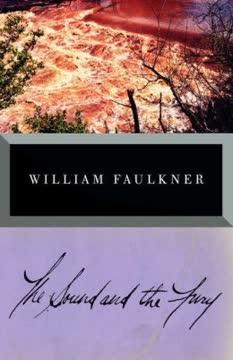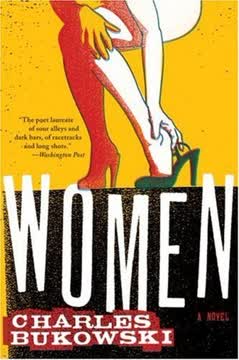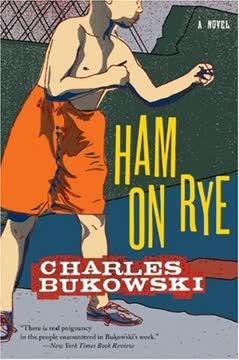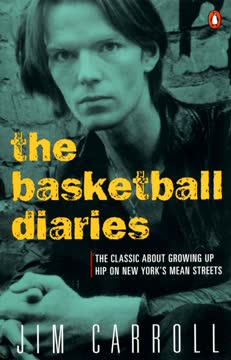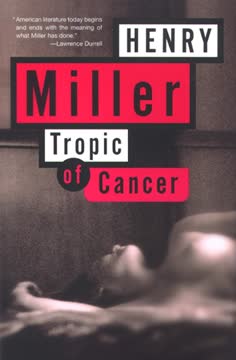Key Takeaways
1. The Artist Destroys and Creates, Mirroring Life's Cycle.
“I revolutionize,” as Blaise Cendrars said of himself.
Creative destruction. The artist, like nature, is a force of creative destruction. They must reject predecessors, smash existing forms, and embrace dissolution to assert their own vision and bring something new into being. This process is not against the world order but a fundamental aspect of it.
Living and dying. The artist lives many lives by dying repeatedly in their work. They bury themselves in their creations to achieve a form of immortality denied to the physical being. This constant cycle of death and rebirth is the very essence of their creative power and revenge upon life.
Beyond conservation. In an age of dissolution, liquidation is a virtue. The artist doesn't seek to conserve or bolster crumbling structures but welcomes dissolving influences. Decay is seen as just as wonderful and rich an expression of life as growth, reflecting the natural, anarchic flow of the universe.
2. True Wisdom Lies in Accepting Life's Full Spectrum, Including Suffering and Death.
There is nothing that it is not better to accept, even though it be the expression of our enemy’s ill-will.
Acceptance is key. The art of living is based on accepting all aspects of life – good and bad, light and dark, life and death. This unconditional surrender converts a static, defensive existence into a dynamic dance, leading to metamorphosis and fulfillment.
Beyond escape. Fear drives man to escape reality, fearing even his own fears. This creates a "Paradise of Neurosis." Wisdom comes from facing the world as it is, accepting difficulties, disease, and death not as enemies to be defeated but as integral parts of the whole.
The long way round. The path of wisdom is the "long way round," embracing assimilation of experience, obedience, and discipline through natural growth. This contrasts with the Western notion of "progress" as a straight line through obstacles, which ultimately defeats itself.
3. Beyond Intellect: The Body and Intuition Hold Deeper Truths.
I learn less and realize more: I learn in some different, more subterranean way.
Wisdom of the body. True wisdom attains its peak when the fundamental, rooted, sacred character of the body is recognized. Thought withers in the topmost branches of the tree of life; the mystery of the Soma is rediscovered by digging into the roots of being.
Intuitive action. The whole man acts not instinctively (which can be perverted) but intuitively, because his wishes are aligned with the law of life. This requires obeying the deeper law of love, based on absolute tolerance and allowing things to be as they are.
Beyond definitions. The deepest truths become unstatable and cannot be grasped by the intellect alone. Understanding is not piercing a mystery but accepting it and living blissfully within it. This intuitive grasp is a different, more subterranean way of knowing.
4. Modernity's Illusion: Progress Masks Fear and Living Death.
This system we call normality, and it is to live in this disordered world that we bring up our children so expensively.
Living death. Modern civilization is characterized by a fear of life, a "living death" where man is sacrificed to mere existence. This state is a Purgatory of ceaseless struggle, a futile wish for endless, meaningless existence.
False progress. The Western idea of progress is a straight line through impenetrable barriers, creating difficulties and defeating itself. This contrasts with the Oriental approach of using obstacles as aids, like in jujitsu.
Escape from reality. Modern society is a "paradise of escapeologists," fixed in concepts like "normality." Science measures the seen but despises the unseen; religion subdivides; art exploits imitation; education mechanizes; law aggressively eliminates; amusements are mechanized. This disordered world is a refuge from realism.
5. Authenticity Requires Embracing One's Unique, Often Contradictory, Nature.
It is just this ability to stand alone, and not feel guilty or harassed about it, of which the average person is incapable.
Discovering destiny. The real problem is not getting along with neighbors or contributing to the country, but discovering one's destiny and living in accord with the cosmic rhythm. This requires living completely for oneself, without selfishness, and giving all one has to give.
Beyond the herd. The American, while moving with the herd, is instinctively a traitor to group, country, and tradition. He seeks a chance for himself, even if it means destruction. This contrasts with the European common man, often trapped by national intrigues, who has grandeur and dignity but little hope as an individual.
Accepting abnormality. It is better to stand alone and feel normal about one's abnormality, doing only what is needed to be oneself. This contrasts with the desire for external security and the endless pursuit of possessions, which are ultimately undefendable.
6. Reality is a Fluid, Symbolic Mystery, Not a Fixed Fact.
The world is a dream which is being realized from moment to moment, only man is sound asleep in the midst of his creation.
No solid facts. There are no solid facts to get hold of; everything is illusive and transparent. All phenomena, including man and his thoughts, are a movable, changeable alphabet. Distortions and deformations in art can be just as near the truth as objective accounts.
Symbolic language. Language beyond words, revealed in style, is the true expression of a man. The artist adopts symbol, metaphor, and ideograph to create a reality suitable to his unconscious desires and dreams, a "lie that enchants and enslaves men."
Anchored in the flow. The artist anchors himself in the flow of reality, adopting a "lying mask" to reveal truth. His work is a geodetic survey of his life, connected vitally to every experience, even the unfinished nothings, which are sharp, tough, and durable.
7. A New Era of Spiritual Transformation is Dawning.
This is the Apocalyptic Era when all things will be made manifest unto us.
Transition and crisis. We are passing through a dark, transitional period, an "equinoctial solstice of the soul." This crisis of consciousness involves disaster and enlightenment, a moment when the earth seems to stand still before swinging back.
The Holy Ghost era. We are entering the era of the Holy Ghost, giving up the ghost of the dead self to enter a new domain. This is not death but a "Scheintot," where the old axis is broken, and we drift towards a new, unthinkable order.
Beyond old forms. The complete destruction of our cultural world is a blessing in disguise. Old grooves of race, religion, and nationality will dissolve, replaced by a community of interest based on the human being, not the animal. This new climate will integrate the body into the world's body.
8. Embracing Destiny Means Surrendering to the Flow, Not Resisting Fate.
Every man has his own destiny: the only imperative is to follow it, to accept it, no matter where it lead him.
Beyond struggle. One gets nearer the heart of truth by ceasing to struggle and abandoning the will. The great writer, like the universe, moves effortlessly from an unknown center, symbolizing the non-perfect livingness.
Accepting responsibility. When the artist recognizes his destiny, he accepts the responsibility of leadership, obeying only his own conscience. He lives out his unique ideas, becoming a sign of Fate itself, incarnating the drama of individual life which must embrace dissolution.
Daring is fatal (or not). "No daring is fatal," said René Crevel. This is true if one is unified. Divided, everything is fatal. Daring, creating from slender support, leads to a mysterious X position of the artist, an anchorage beyond knowledge or skill.
9. Vision and Perception Reveal the Sacred in the Commonplace.
The cosmologic eye, persisting through wrack and doom, impervious, inchoate, seeing only what is.
Normal vision. True artists like Brassai possess "normal vision," seeing the world precisely as it is, without distortion or need to lie. This rare gift allows them to detect novelty and perfection in the fragment, the defect, and the commonplace.
The eye's power. The artist's eye is a living entity, capable of penetrating reality, revealing hidden structures, and transferring personality to objects. This "cosmologic eye" sees the world as one creative substance, born of and relapsing into darkness.
Uniqueness in everything. By detaching personal will, the artist discovers personality everywhere. Objects acquire uniqueness and significance when regarded awesomely, not just aesthetically or pragmatically. The most banal things, seen for the first time, reveal the marvelous.
10. The Human Condition: A Tapestry of Love, Suffering, and Paradox.
The heart cannot be broken.
Enduring suffering. The heart, though wounded, cannot be broken. It knows no limits in its ability to endure suffering and torment. Life can be lived at vastly different levels, appearing almost extinct in some cases, yet still pulsating with vitality.
Love and brutality. The French actor, like Raimu, embodies a curious mixture of tenderness and brutality, revealing a passionate understanding of the human. This contrasts with the American tendency towards extreme, empty expressions of either violence or gaiety.
Seeking connection. Even those who reject society, like the alcoholic veteran, reveal a deep human need for connection and understanding. Their stories, no matter how distorted, are attempts to communicate their anguish and find a responsive chord in others.
11. Duality Defines Us, Wholeness is the Goal.
The man of today, the man of the transition period, split and straddled as he is between two worlds, pregnant with the germ of the future, is veritably crucified by his duality.
Inner and outer. Man is defined by duality: the world of outer reality (action) and the world of inner reality (thought). Art serves as a fulcrum, but it wears away, requiring heroic figures to offer themselves as support.
The split consciousness. The expansion of the known universe, like the Renaissance exploration or the psychoanalytic discovery of the unconscious, entails a split in consciousness. Modern nations exhibit schizophrenia, their activity a symbol of impotence to bridge this split.
Towards integration. The disturbances of the age indicate a movement towards totality and integration. The fight is between the death instinct and the life instinct, an inner warfare between the real and ideal man. The ideal man must perish for the real human being to emerge whole.
12. Live Fully Now: The Present Moment is the Only Reality.
The best world is that which is now this very moment.
No postponement. Life is for most a long postponement, driven by fear. The wise accept the world as a womb, a place where things are engendered, living in an intense state of awareness without fear of past or future.
The world as act. Everything that exists, exists by fiat; the world is an act, perhaps an act of thought. The important thing for man is to get born into the world-as-is, the world of NOW, accepting its contradictions and living it out fully.
Beyond seeking. Men seek life thirstily, but their eyes are in the back of their heads. Life can only be seized by the whole organism, felt directly, demanding no proof. It is simple, startlingly simple, and the miracle is constantly within our grasp if we cease trying to evade it.
Last updated:
Review Summary
The Wisdom of the Heart is a collection of essays and short fiction by Henry Miller that receives mixed reviews. Many readers praise Miller's raw, honest writing style and philosophical insights on art, life, and the human experience. They appreciate his exploration of topics like creativity, identity, and spirituality. However, some find the essays pretentious or difficult to follow. The book is seen as less controversial than Miller's more famous works, focusing more on his intellectual musings. Overall, it's regarded as an important work that showcases Miller's passionate and introspective writing.
Similar Books
Download PDF
Download EPUB
.epub digital book format is ideal for reading ebooks on phones, tablets, and e-readers.

